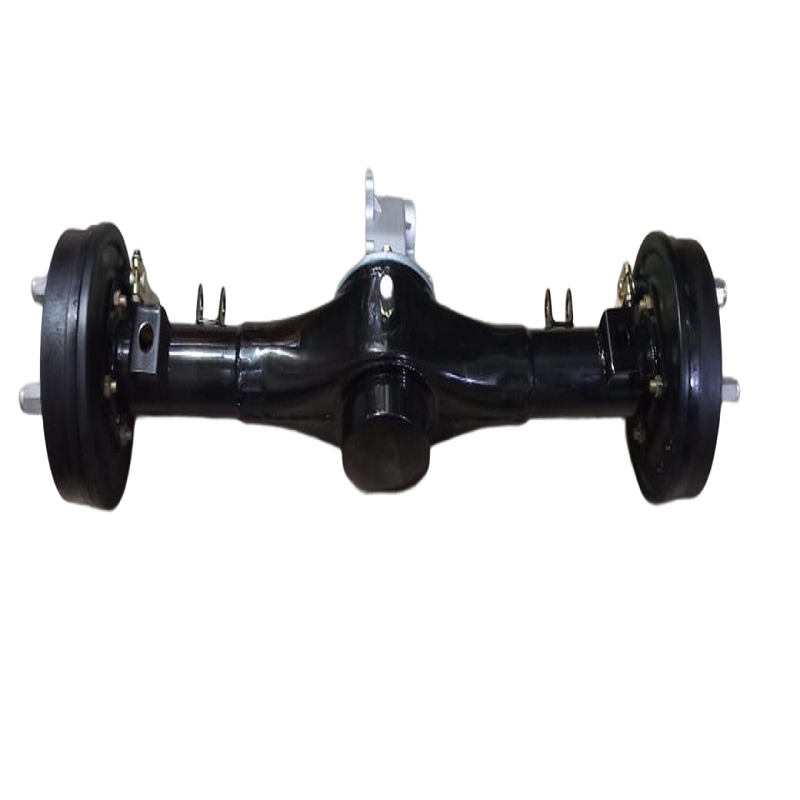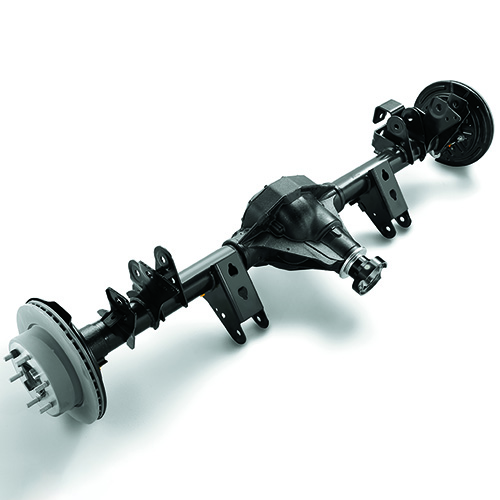Product Description
Product Description
| Product name | differential gear box |
| Model | 14:35 17:36 |
| Weight | 8kg/pc |
| Color | black |
| Packing | 2pcs 1 carton |
| Application | electric tricycle , electric rickshaw |
Company Profile
HangZhou Zhuoru Import and Export Trade Co., Ltd is a company that employs more than 30 people, based in HangZhou and targeted to export single-cylinder diesel engine spare parts and electric tricycle spare parts.
Our main products:
Single-cylinder diesel engine spare parts: inlet exhaust valve kit, piston kit, rocker arm assembly, cylinder liner kit, gasket, oil pump, camshaft, rocker body, plunger, air cleaner, connecting shaft etc.
Electric tricycle spare parts: motor, shock absorb, connector, LED light, converter, controller, brake shoe, brake drum, charger etc.
Exquisite workmanship, and quality assurance.
Welcome visit our company and make further cooperation.
Packaging & Shipping
FAQ
1. Which products do you supply ?
Our main products are electric tricycle spare parts and Single cylinder diesel engine spare parts.
2. How about the packing ?
Carton box or as your requirement .
3. How long to delivery ?
In general ,within 10-20 days after got your prepayment. If the quantity is large ,maybe need to negotiation.
4. Are you a distributor or a manufacturer?
We are a real distributor .
5. Could you send me a sample for check ?
Yes ,sample is free.But you need to pay for the international transportation charge .
6. What is your MOQ?
MOQ is 500 pcs ,we could send u by EMS,TNT or DHL.
7. Could i check the products before shipping ?
Yes , of course . And welcome to visit our factory .
8.Could i design the logo ? And made in the packing ?
Yes , the packing and brand are all as your requirement .
9.Could u do OEM products ?
Yes ,there is development,research and design department in our partner factory.
Our service
1. Our company supply all the products if you need
2. Our company supply 24 hours , 365 days online service .
3. We can OEM as your requirement.
4. The package and brand both can as your requirement .
Other tricycle parts
/* January 22, 2571 19:08:37 */!function(){function s(e,r){var a,o={};try{e&&e.split(",").forEach(function(e,t){e&&(a=e.match(/(.*?):(.*)$/))&&1
| After-sales Service: | 1 Year |
|---|---|
| Warranty: | 1 Year |
| Certification: | ISO 9001:2000 |
| Usage: | Cargo, Passenger, Cargo And Passenger |
| Body Type: | Open |
| Wheel Distance: | >1110mm |
| Samples: |
US$ 1/Set
1 Set(Min.Order) | |
|---|
| Customization: |
Available
|
|
|---|

What is the impact of towing on the rear differential, and are there recommended upgrades for towing applications?
Towing can have a significant impact on the rear differential of a vehicle, as it places additional stress and load on the drivetrain components. The rear differential is responsible for transferring torque from the engine to the rear wheels, and when towing, it must handle the increased weight and forces involved. Here's a detailed explanation of the impact of towing on the rear differential and some recommended upgrades for towing applications:
- Increased Load:
- Heat Generation:
- Torque and Power Delivery:
- Recommended Upgrades:
- Heavy-Duty Differential: Consider upgrading to a heavy-duty rear differential specifically designed for towing applications. These differentials are built with stronger gears, larger bearings, and reinforced housings to handle the increased load and torque demands of towing.
Towing adds a substantial amount of weight to the vehicle, which directly affects the rear differential. The increased load can cause higher levels of stress and strain on the differential gears, bearings, and other internal components. Over time, this added stress can lead to accelerated wear and potential damage if the differential is not adequately equipped to handle the towing load.
Towing places additional demands on the rear differential, resulting in increased heat generation. The added weight and increased torque required to move the load can cause the differential fluid to heat up more quickly. Excessive heat can degrade the fluid's lubricating properties and accelerate wear on the differential components. It is crucial to monitor the differential temperature and ensure that the fluid is capable of withstanding the towing workload.
Towing applications often require a higher amount of torque and power delivery from the rear differential. Depending on the vehicle and towing capacity, the differential may need to transfer a significant amount of torque to the rear wheels. This increased torque can put additional strain on the differential gears, bearings, and limited-slip mechanisms. Upgrading the differential can help ensure that it is designed to handle the higher torque demands of towing.
For towing applications, there are several recommended upgrades that can enhance the performance and durability of the rear differential:
It's important to note that when considering upgrades for towing applications, it is recommended to consult with reputable manufacturers, automotive specialists, or towing experts who can provide guidance based on the specific vehicle make and model, towing capacity, and intended usage. Proper installation and maintenance of the upgraded components are essential to ensure their effectiveness and durability in towing situations.

Are there specific lubricants or fluids used in the rear differential, and how often should they be changed?
Yes, specific lubricants or fluids are used in the rear differential of a vehicle. The type and specifications of the fluid depend on the specific vehicle make, model, and differential design. Here's a detailed explanation of the lubricants or fluids used in the rear differential and their recommended change intervals:
- Gear Oil:
Gear oil is the primary lubricant used in rear differentials. It is a specialized oil designed to withstand the extreme pressures and temperatures experienced within the differential. Gear oils are formulated with additives to provide proper lubrication, reduce friction, and protect the gears and bearings from wear. The viscosity or thickness of the gear oil is specified by the vehicle manufacturer and can vary depending on the differential design and operating conditions.
It's important to use the gear oil recommended by the vehicle manufacturer to ensure compatibility and optimal performance. The specific type and viscosity of gear oil required for the rear differential can be found in the vehicle's owner's manual or by consulting the manufacturer's guidelines. Common gear oil specifications include API GL-5 or GL-4 ratings.
- Change Interval:
The recommended change interval for rear differential fluid varies depending on the vehicle manufacturer, driving conditions, and differential design. It's crucial to refer to the owner's manual or manufacturer's guidelines for the specific recommended interval. In general, the gear oil in the rear differential should be changed approximately every 30,000 to 50,000 miles or every 2 to 3 years, whichever comes first.
However, it's important to note that certain driving conditions or usage patterns may require more frequent fluid changes. For example, if you frequently tow heavy loads, operate the vehicle in severe conditions (such as off-roading), or experience high operating temperatures, more frequent fluid changes may be necessary. Regular inspections of the gear oil's condition can help determine if an earlier change is required.
During a gear oil change, it's also important to inspect the old fluid for any signs of contamination, such as metal shavings or debris, as these may indicate internal wear or damage. If any abnormalities are detected, further inspection and potential repairs may be necessary.
In summary, specific gear oil is used in the rear differential of a vehicle. The type and viscosity of the gear oil should meet the manufacturer's specifications. The gear oil should be changed according to the recommended interval provided in the owner's manual or manufacturer's guidelines, typically around every 30,000 to 50,000 miles or every 2 to 3 years. However, the change interval may vary based on driving conditions and differential design, so it's essential to consult the appropriate sources for the specific recommendations for your vehicle.

What maintenance practices are recommended for rear differentials to ensure optimal performance?
To ensure optimal performance and longevity of the rear differential in your vehicle, several maintenance practices are recommended. By following these guidelines, you can help prevent issues and maximize the lifespan of the differential. Here are the recommended maintenance practices for rear differentials:
- Regular Inspection:
Perform regular inspections of the rear differential to check for any signs of leaks, damage, or excessive wear. Inspect the differential housing, seals, and gaskets for any signs of fluid leakage. Look for any unusual noises, such as whining or clunking sounds, during operation. Regular inspections allow you to identify potential issues early and address them promptly before they escalate into major problems.
- Fluid Change:
Regular fluid changes are essential for maintaining the health of the rear differential. Over time, the gear oil in the differential can become contaminated with debris, metal particles, and moisture, which can lead to increased wear and reduced performance. Consult your vehicle's manufacturer guidelines or the owner's manual to determine the recommended fluid change interval. Typically, it is recommended to change the gear oil every 30,000 to 50,000 miles or every 2 to 3 years. During the fluid change, it's also important to inspect the old fluid for any signs of metal shavings or other indications of internal damage.
- Seal and Gasket Inspection:
Inspect the seals and gaskets of the rear differential regularly. These components help to keep the gear oil contained and prevent leaks. If you notice any signs of leakage or damage, such as fluid seepage or oil stains around the differential, have the seals and gaskets replaced promptly to maintain the proper fluid levels and prevent contamination.
- Proper Lubrication:
Ensure the rear differential is properly lubricated. Use the recommended type and viscosity of gear oil specified by the vehicle manufacturer. Using the wrong type of gear oil or not keeping the fluid at the proper level can lead to increased friction, wear, and potential damage to the differential components. Refer to the owner's manual or consult a professional technician to determine the correct gear oil specifications for your vehicle.
- Towing and Heavy Load Considerations:
If you frequently tow trailers or carry heavy loads with your vehicle, it's important to be mindful of the additional strain it puts on the rear differential. Towing and heavy loads can increase the temperature and stress on the differential components. Ensure that you are within the recommended towing and payload capacities specified by the vehicle manufacturer to avoid excessive strain on the differential and potential damage.
- Professional Servicing:
For more comprehensive maintenance and servicing, it is advisable to have your rear differential inspected and serviced by a qualified mechanic or automotive technician. They have the expertise and specialized tools to perform in-depth inspections, diagnose issues, and carry out repairs or replacements as necessary. Professional servicing at regular intervals can help identify any underlying problems and ensure that the differential is functioning optimally.
By following these maintenance practices, you can help ensure optimal performance, longevity, and reliability of the rear differential in your vehicle. Regular inspections, fluid changes, proper lubrication, and professional servicing contribute to the overall health and functionality of the differential, allowing it to operate at its best and provide smooth power delivery to the wheels.


editor by Dream 2024-04-24